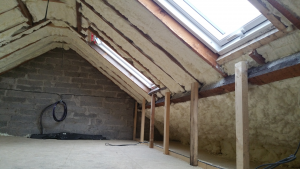Attic Spray Foam Insulation Arklow
3 Bed Semi Attic Insulation Arklow
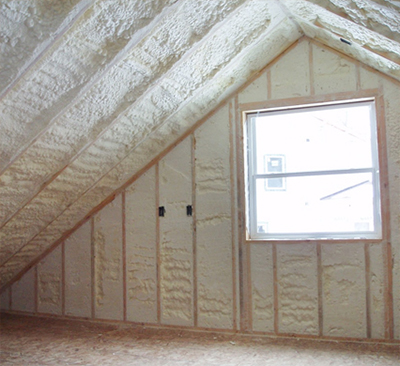
Attic Insulation Arklow
Spray foam can be used in many situations. Spray foam can be used on roofs, windows and attics as well underfloor heating systems and interior and external walls.
Spray foam insulation is not only warm and comfortable in winter but also cools your home in summer. Spray foam insulation allows the house to breathe because it allows moisture-laden atmosphere to escape through its “Cell” structure.
Benefits of Spray Foam Insulation for your home
Other uses include: commercial and industrial buildings; agricultural farms houses; sheds; shipping containers; vessels; and the refrigeration industry.
It also acts as an airtight shield around the house to keep out cold wind and rain. It allows the heat from your home to escape, which is what most other insulating products today fail to do.
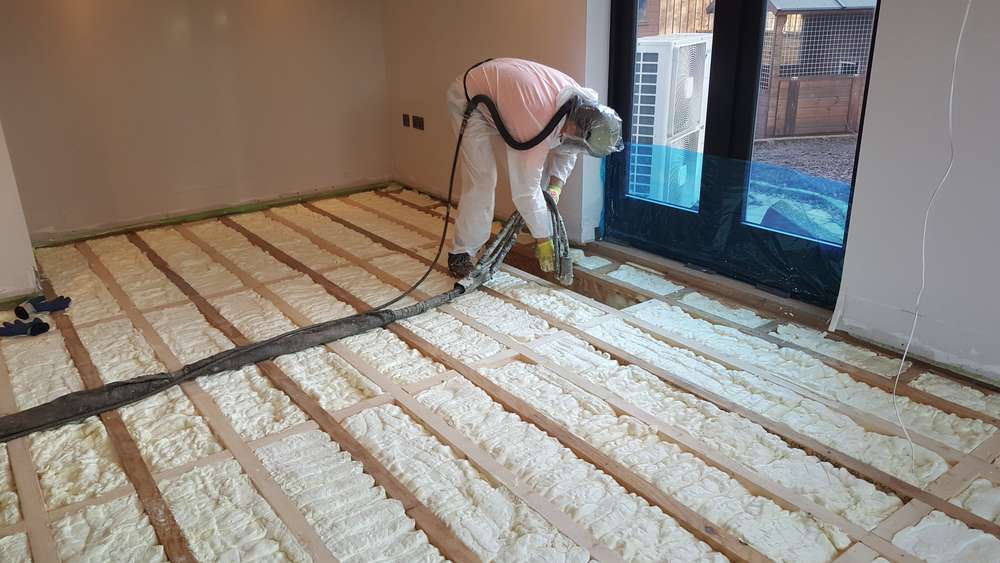
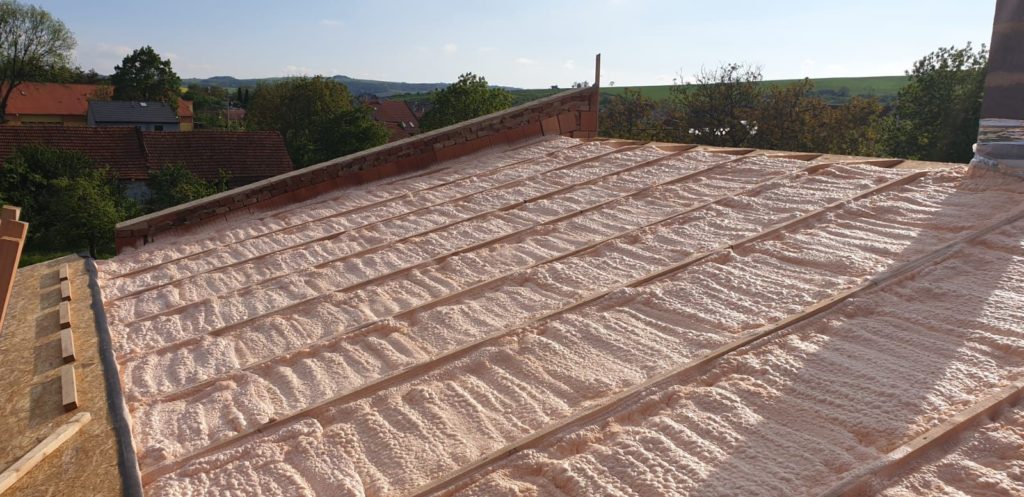
Cost Price Of Spray Foam Insulation
Spray foam insulation has proven to be the most effective insulation material on the market today. It has a higher U value than other insulating materials such as rock wool, fiberglass and cellulose.
Spray foam insulation can also be used as a sound barrier. It reduces outside noise by up to 50%. This is particularly beneficial if the home or business is located near an airport or densely populated city.
Insulate Your Arklow Property Properly
It is used to eliminate sound traveling from one room into another, or across floors in the interior walls. It is particularly useful in bathrooms, where the noises of flushing toilets and showers can be annoying.
It is very easy to use and doesn’t cause any disruption to everyday life.
In just one day, you can insulate an Irish home.
Encasing and isolating pipes reduces noise in the walls or under-floor.
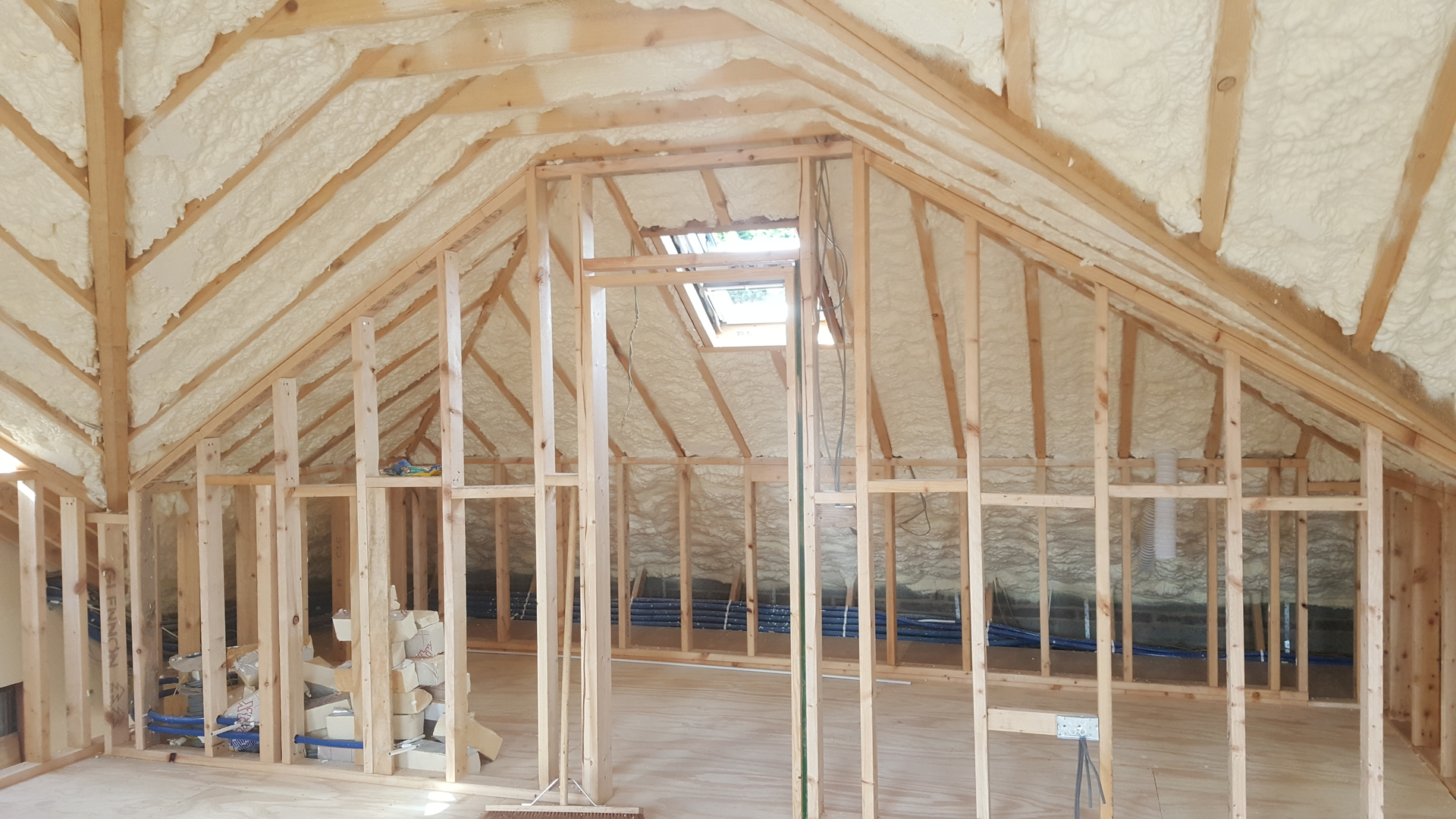
Plan to store things in your loft or attic, so you’ll need to put boards on top of the joists. You won’t get thick insulation if the insulation isn’t thick enough if the insulation is only applied between the joists.
It reduces sound transference by up to 50% when used in walls, attics and roofs. Because of its dense composition and application process, it creates an airtight envelope. It blocks sound from outside, including traffic, pedestrianised streets, and areas near airports.
It also blocks sounds from a structure’s walls from reaching other floors, including the floors below. Spray foam insulation will dramatically reduce the sound levels of many noises within a structure, including talking, hair dryers (phones), office computers and printers as well as running showers, laundry machines, clothes dryers.
Spray foam insulation is flexible and filled with millions upon millions of microscopic air bubbles. This not only absorbs the vibrations and stops sound from passing through the floor, but also prevents sound from being transferred. Spray foam insulation reduces the transmission and propagation of airborne noises by sealing every crack and crevice.
Spray foam insulation can also dampen, if not completely eliminate, sounds from floors such as water moving through pipes. The insulation completely surrounds pipes to prevent them from moving and keeps them secure. It also eliminates any sounds caused by hot water flowing from the heating system heating the wooded joints. They expand, creak or groan.
It also stops heat escaping from the upper floors. Lower floors become cooler which, in turn, requires more heat. Upper floors then become too hot.
If the loft is accessible and free from damp or condensation, insulation should be simple. In many cases, you can do it yourself.
An uninsulated home loses 25% of its heat through its roof. Insulating your attic, loft, or flat roof can reduce heat loss and lower your heating bills.
If you have access to your loft joists and it is easy to use, mineral wool insulation rolls can be used. The insulation begins by placing the first layer between the joists. These are the horizontal beams that form the loft’s floor. A second layer is then laid at right angles to cover and seal the joists.
In order to have enough insulation, raise the floor so that enough mineral wool can be fitted below the new floor. This can be done by installing timber battens along the joists or by purchasing purpose-built plastic leg that attach to the joists to support the new floor. You should leave enough air space between insulation layers and boards to prevent condensation.
When you attach the boards to the board, make sure not to squash the mineral wool. This will lower its insulation.
Insulation blocks heat escape from living spaces. Therefore, loft insulation will cool your loft space, which can lead to condensation or damp problems. You may need to increase ventilation if you install loft insulation yourself.
A second way to insulate your loft, is to install insulation between and over rafters. These sloping woods make up the roof. You have the option of using rigid insulation boards carefully cut to size or foam insulation sprayed between your rafters.
Some companies offer to fix a roof that is leaking or damaged by applying foam insulation directly to the roof. This will not solve the problem. This is not something we recommend. You must ensure that your roof is in good condition before you apply insulation.
You can use your loft to heat the space, but you will need to create a separate room on the roof.
You will need to insulate the loft walls and ceilings if you intend to use it as your living space.
Your house must allow air to flow freely in order for it to stay fresh, dry, and healthy. Installers who are skilled will make sure that you don’t block or seal off any ventilation. Do not cover any grilles, vents, or airbricks if you do DIY insulation.
A professional can install blown insulation in a loft that is difficult to reach. They will use special equipment to blow the appropriate insulation material into any space. They might use treated cellulose, mineral wool fibre or polyurethane foam.
Flat roof insulation may save you the same amount as loft insulation on your heating bills. The size of your flat roof will affect the savings.
If your loft is easily accessible, doesn’t have damp problems, and has a flat roof, it could be insulate yourself. If there are damp issues or more complex insulation needs, a professional should be hired.
Your loft hatch could become colder due to the cooler air. This can be prevented by installing an insulated hatch in your loft and putting strips of draught-exclusion material around the hatch edges.
Insulating the ground floor of your property is a great option to keep it warm and also lower your emissions.
Insulating your loft is a great way to cut down on heating costs and save energy. It also keeps the home warm in winter. It doesn’t matter if you have insulation in place, but it is important to get the right amount to make it work.
Loft floor rolls – These are the more traditional option. They are rolled along the loft’s floors. These are easier than insulated floor boards and require less tools and take less time to lay. They can be purchased as either loose (blanket), or encapsulated (blanket), and can be used to make both top and base layers. You can use stilts or boards to board them. This will create a raised platform that is suitable for storage.
These items and tips are not included in the article’s list. Make sure you read the entire article to ensure you are fully equipped to insulate your loft floor safely.
Even though insulation is often present in homes, some may not be effective. This could happen if the insulation isn’t topped up regularly or has been compressed by storage board. It is possible for loft floors to be as low as 25mm (deeper) in older properties.
It doesn’t have to be removed from your loft floor insulation. To get the recommended amount, just add one to three layers more. The article will provide more details about how much you should be consuming.
The loft floor’s joist spacings will influence the width roll that you choose. This is because insulation will be rolled between the joists. We recommend that you choose one that is as close as possible to your joist spacing. This will minimize the need to trim excess.
The insulation must meet the requirements for thermal resistance. Alternativly, you can measure the insulation’s thickness if you are only laying loft rolls. Refer to the section titled “How to calculate the loft floor insulation thickness required” for more details.
Areas We Service
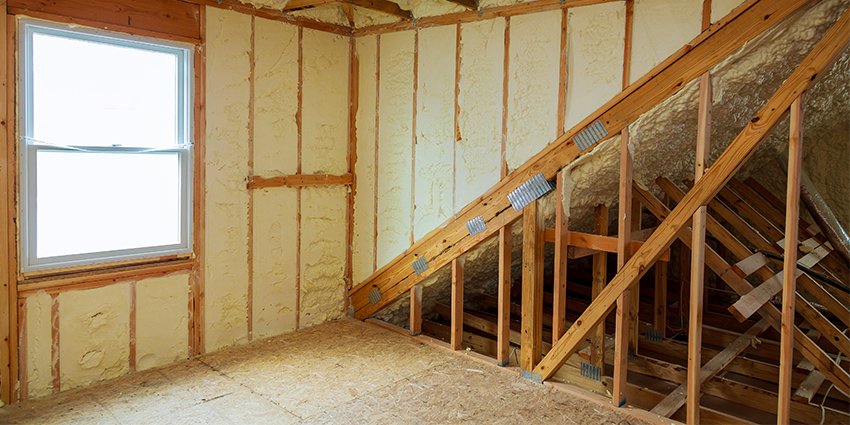

Parkhill, Dublin
01 5255297
